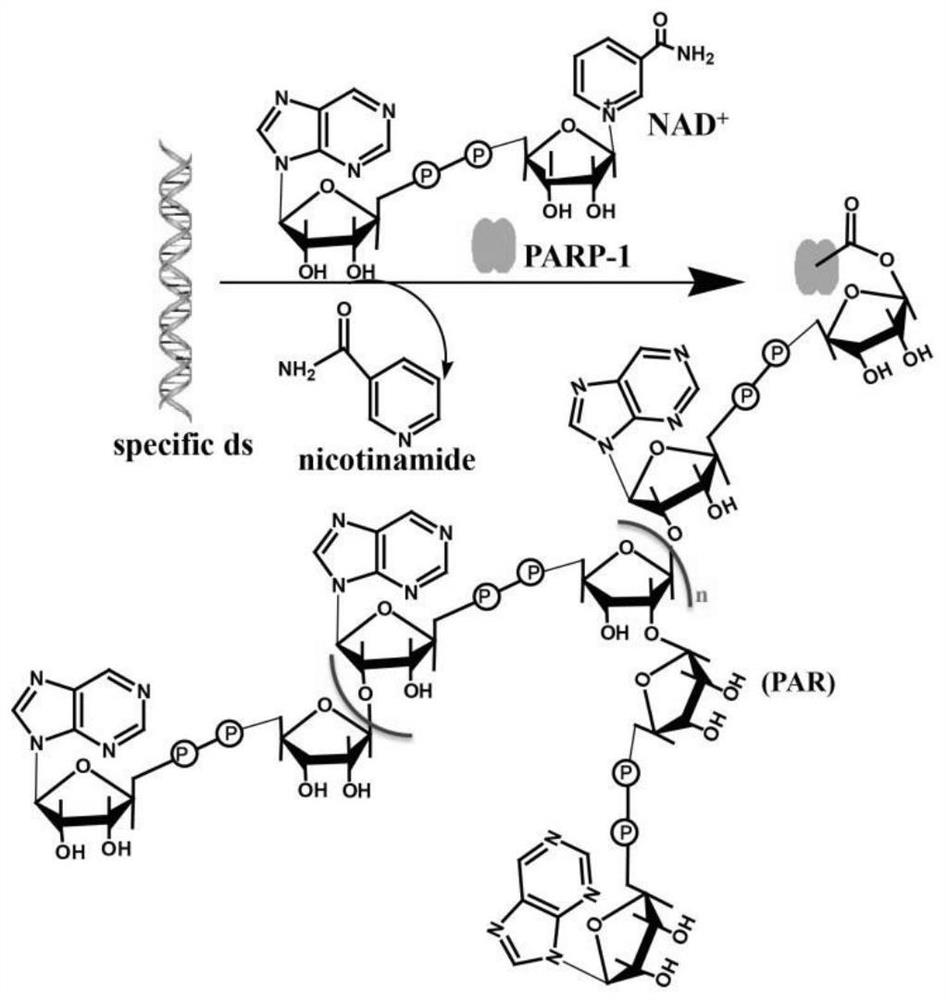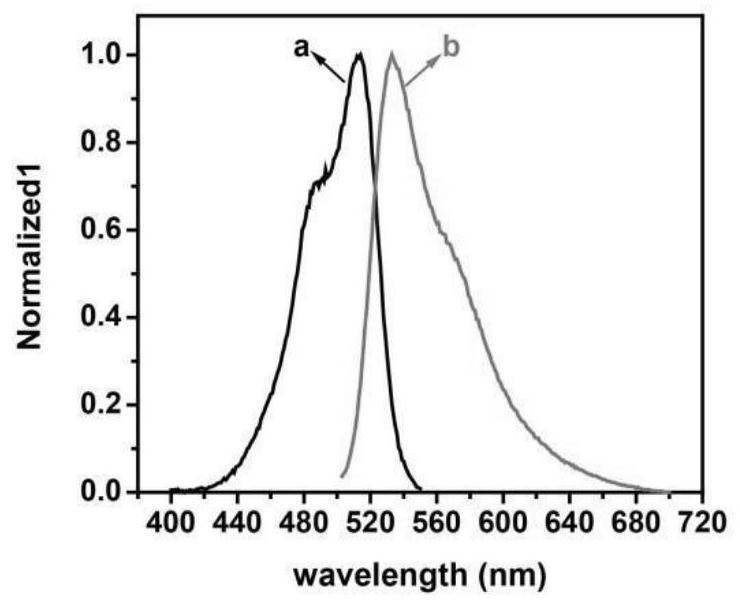Method for detection of parp-1 activity based on fluorescent dye toto-1 assay
A technology of TOTO-1 and PARP-1, which is applied in the field of quantitative detection of biological enzymes with TOTO-1 fluorescent dyes, can solve the problems of cumbersome synthesis and achieve the effects of simplifying detection methods, reducing virus detection costs, and avoiding high detection costs
- Summary
- Abstract
- Description
- Claims
- Application Information
AI Technical Summary
Problems solved by technology
Method used
Image
Examples
Embodiment 1
[0039] The analytical method for detecting PARP-1 activity by analyzing fluorescent dyes based on TOTO-1, the detection steps are:
[0040] DNA hybridization step: Add two specific DNA single strands to the DNA hybridization buffer solution (10mM Tris-HCl, pH 7.4, 0.1M NaCl), and slowly cool to room temperature in a 95°C water bath for 5 minutes to form a hybridized double-stranded DNA double strand DNA)
[0041] The steps of PARP-1 catalyzing the synthesis of PAR: PARP-1 is configured into different concentrations with reaction buffer solution, and in the presence of double-stranded DNA, NAD + Reaction buffer solution (50mM Tris-HCl, pH 7.4, 50mM KCl, 2mM MgCl 2 , and 50μM Zn(OAc) 2 ) was added dropwise with 0.1U PARP-1, and reacted at 37°C for 1h.
[0042] ExoⅢ excises the DNA double strand and releases the amplified PAR step: add 2 μL of ExoⅢ solution dissolved in 10X ExoⅢ buffer solution, the final concentration of ExoⅢ is 1.6 U / μL, and react at 37°C for two hours.
[...
Embodiment 2
[0050] The difference between the double-stranded DNA and Example 1 is that PARP-1 (1U=45ng) of different concentrations is selected: (a) 0 (b) 0.02 (c) 0.1 (d) 0.2 (e) 0.5 (f) 0.8 (g )1.1(h)1.5(i)2(j)3, get the fluorescence spectrum as Figure 5 As shown, it can be seen that in the range of 0-3U, PARP-1 has a good linear relationship at 0.02-1.5U, and the detection limit is 0.02U.
PUM
 Login to View More
Login to View More Abstract
Description
Claims
Application Information
 Login to View More
Login to View More - R&D
- Intellectual Property
- Life Sciences
- Materials
- Tech Scout
- Unparalleled Data Quality
- Higher Quality Content
- 60% Fewer Hallucinations
Browse by: Latest US Patents, China's latest patents, Technical Efficacy Thesaurus, Application Domain, Technology Topic, Popular Technical Reports.
© 2025 PatSnap. All rights reserved.Legal|Privacy policy|Modern Slavery Act Transparency Statement|Sitemap|About US| Contact US: help@patsnap.com



